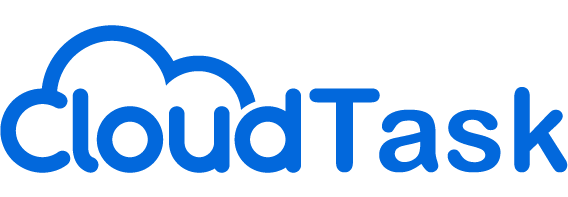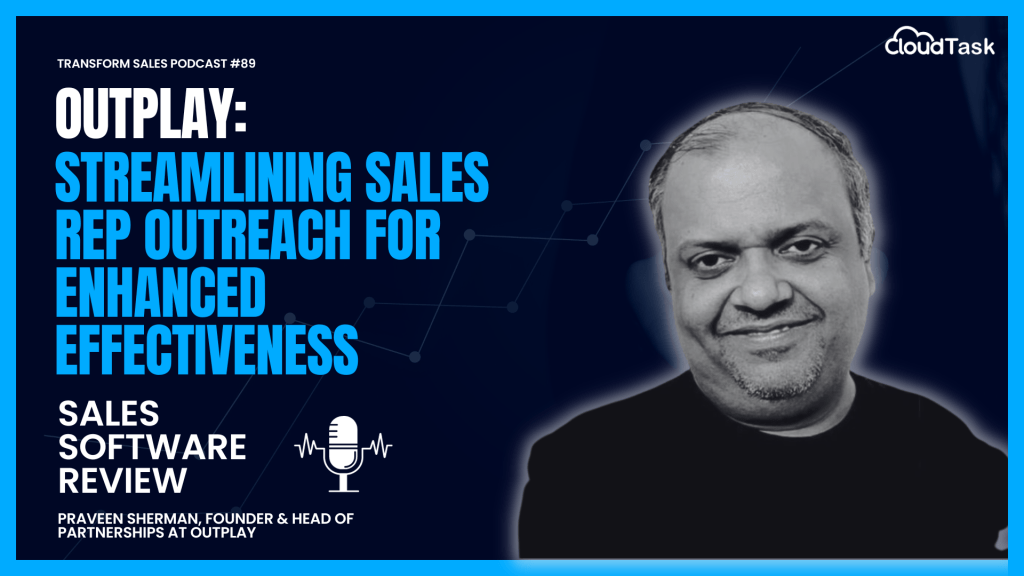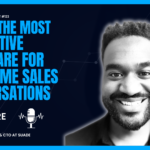Listen to this podcast on your favorite platform
In the Transform Sales Podcast: Sales Software Review #89, Praveen Sherman, Founder and Head of Partnerships at Outplay, introduces the features and benefits of Outplay, a modern sales engagement platform that helps sales reps streamline their outreach process. Praveen explains that Outplay is suitable for any sales-driven organization, including B2B businesses, SaaS companies, technology firms, and professional services. He highlights the success metrics of Outplay, such as improving activity metrics, conversion rates, pipeline velocity, and overall revenue generation. Praveen shares a case study where Outplay helped sales reps triple their prospect count and achieve a 15x conversion ratio to their pipeline. Praveen also demonstrates the Outplay platform, showcasing its lead sourcing tool, engagement dashboard, and dynamic task features.
In case you missed it…. these are the highlights
What is Outplay, and how would you describe it?
Outplay is a modern sales engagement platform designed to empower sales reps. Traditional CRM systems store data but offer limited actionable items. Outplay fills this gap by allowing sales reps to build a strategic outbound function. You can reach out to prospects through various channels—email, phone calls, and social platforms—and engage with them effectively. The platform provides visibility into customer engagement, increasing the likelihood of converting prospects into customers.
The platform offers features like multi-channel communication, the ability to track and analyze interactions, and collaboration tools for sales teams. We’ve seen companies increase their success rate by 30% and triple their prospect count using Outplay.
So, if you’re looking to streamline your sales outreach and boost your team’s performance, Outplay has got you covered.
What type of buyers does Outplay best?
The types of buyers we serve best are organizations that are sales-driven, where sales activities and customer engagement are vital for business success. This typically includes companies across various industries such as B2B businesses, SaaS companies, technology firms, and professional services. Outplay fits very well for small and midsize organizations right now, particularly startups looking to set up their outbound process or small and midsize companies who are looking to scale their sales teams. Typically, companies that have like 50 to 250 employees in size and 5 to 30 sales reps would get the best out of Outplay. Sales agencies can also benefit greatly from our platform.
What does Outplay help them do that they couldn’t do before Outplay existed?
Before the advent of Outplay, sales reps were largely reliant on traditional CRM systems, which, while excellent for data storage, offered little in the way of actionable steps or insights. Outplay fundamentally changes this dynamic by providing a comprehensive sales engagement platform that allows for strategic outbound functions.
We offer a multi-channel communication suite that enables sales reps to connect with prospects not just via email, but also through phone calls, and various social platforms like LinkedIn and Twitter. This omni-channel approach maximizes the chances of effectively reaching and connecting with prospects on platforms they prefer, thereby increasing engagement rates.
One of the standout features of Outplay is its real-time visibility into customer engagement metrics. This feature allows sales reps to understand how their prospects are interacting with their outreach efforts, whether it’s email opens, clicks, or social media engagement. This level of insight was challenging to achieve with traditional methods but is now readily available, increasing the likelihood of moving prospects down the sales funnel and ultimately converting them into customers.
Moreover, Outplay introduces dynamic task features and automated workflows. These tools automatically prioritize tasks based on how prospects are engaging with your outreach efforts. For example, if a prospect opens an email multiple times but hasn’t responded, a dynamic task can be created to prompt a follow-up call. This level of automation and prioritization was cumbersome and time-consuming to manage manually before Outplay came into the picture.
“…In summary, Outplay doesn’t just streamline the sales outreach process; it elevates it, making it far more efficient, data-driven, and effective than ever before.”
How should users measure success with Outplay?
Measuring success with Outplay involves focusing on several key performance indicators (KPIs). The first KPI to consider is activity metrics. Are your sales reps more active than before in terms of the number of calls made, emails sent, or social interactions? Increased activity levels are a strong indicator of improved sales engagement.
The second KPI is conversion rates. Are you seeing an improvement in the conversion from leads to opportunities or from opportunities to closed deals? Outplay also offers A/B testing features, allowing you to optimize your outreach strategies and improve these conversion rates further.
The third KPI is pipeline velocity, which measures the speed at which opportunities progress through the sales pipeline. Has Outplay improved efficiency, resulting in shorter sales cycles and faster deal closures? This could vary from business to business, but it’s an important metric to track.
Lastly, the impact on revenue generation should not be overlooked. Analyze the overall impact of using Outplay on your revenue before and after implementing the tool. This will give you a comprehensive view of how effective the platform has been in achieving your sales goals.
In essence, success with Outplay should be gauged through a combination of improved activity levels, better conversion rates, increased pipeline velocity, and a positive impact on revenue. These KPIs provide a holistic view of the effectiveness of your sales engagement strategies.











